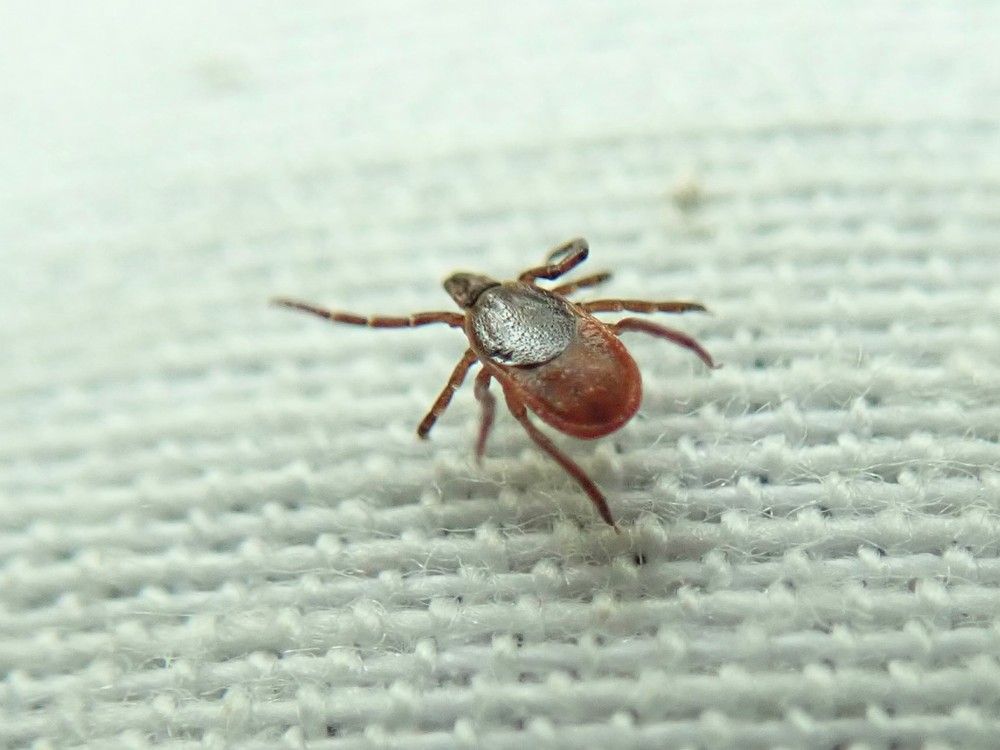Eastern Ontario is at the epicentre of a
tick population boom
, and with it, health officials are reporting the highest levels of
Lyme disease
in the province.
So far this year, there have been 186 confirmed cases of Lyme disease in south-east and Eastern Ontario, stretching from about Prince Edward County to the Quebec border, including Ottawa, according to Public Health Ontario. That is more than half of all the cases in the province since the beginning of 2025.
By far, the highest concentration of the tick-spread disease in the province is within the large
South East Health Unit
, which includes Smiths Falls, Brockville, Kingston, Belleville and Prince Edward County, among other regions. With 132 cases, it has the highest rate of Lyme disease in Ontario.
Ottawa, with 41 cases, and the Eastern Ontario Health Unit, with 13 cases, also have higher-than-average rates of Lyme disease. Those reported cases reflect the climate-driven growth of tick populations across the area and heightened risk of Lyme disease and anaplasmosis, which are both spread by blacklegged ticks carrying bacteria.
Ottawa Public Health said the case count for Ottawa is likely higher than those numbers suggest and will continue to increase as the season progresses because there is usually a lag in diagnosis, reporting and data entry.
Anaplasmosis is not as common and has not been seen in Ontario for as long as Lyme, but cases are increasing. It can cause flu-like symptoms, sometimes leading to hospitalization. So far this year, there have been 15 reported cases of anaplasmosis in Ontario.
Manisha Kulkarni, who is a professor at the School of Epidemiology and Public Health at the University of Ottawa and is scientific director of the Canadian Lyme Disease Research Network, conducts tick-population surveillance in Ottawa and elsewhere.
“Yes, we are seeing a steady expansion of blacklegged ticks in the Ottawa and Eastern Ontario area, with detections of the agents of Lyme and anaplasmosis in many locations,” she said.
Among her work is a recent paper published in Nature, which identified high “environmental risk” for Lyme disease bordering residential areas where they conducted surveillance in the western region of Ottawa.
Dr. Trevor Arnason, Ottawa’s acting medical officer of health, said it is difficult to know whether Lyme disease is being underreported. But he hopes growing awareness, including through public health
messaging
about ways to prevent tick exposure, as well as the growing role pharmacists play, will protect people and reduce spread.
Since 2023, pharmacists in Ontario have been able to assess patients for tick bites and prescribe a post-exposure dose of antibiotics to prevent Lyme disease, reducing barriers to early treatment.
At some local pharmacies, there has been a steady stream of patients in recent weeks with questions about tick bites.
Patients who show signs of Lyme disease must see a physician or nurse practitioner for diagnosis and treatment.
Since the proportion of ticks carrying Borrelia burgdorferi, the bacteria that cause Lyme disease, is well above the 20 per cent threshold, prescribing a short dose of preventative antibiotics is standard for tick bites, said Arnason.
“We have to assume that all ticks could potentially pass on Lyme disease,” Arnason said.
It is a sign of the times that Public Health Ontario has created a real-time Ontario Vector-Borne Disease Tool which tracks Lyme disease, anaplasmosis, Powassan virus and babesiosis, all spread by ticks, in addition to West Nile disease, which is spread by mosquitoes. Vector-borne diseases are increasing as a result of warming winters and changes related to climate change. The online
dashboard
reports weekly on cases of the illnesses. So far this year, Lyme disease and anaplasmosis are the only vector-borne diseases reported in Ontario. West Nile disease usually shows up later in the summer.
Ottawa Public Health recommends that people apply insect repellent containing DEET or icaridin to exposed skin and clothing, wear long pants, a long-sleeved shirt, shoes and socks to cover exposed skin, tuck pants into socks, wear light-coloured clothing to spot ticks more easily, stay on trails when hiking, if possible, and do full-body checks for ticks.



